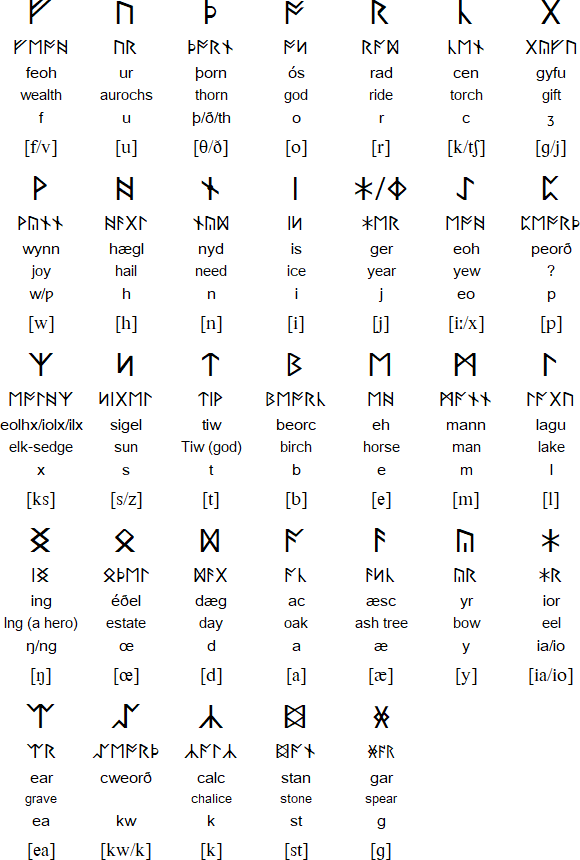

A -Īðalráðr konungr m King Æthelred II (the unready) of England The symbol marks the 246 most common words in the sagas. Preterite-Present Verbs: are named so because their present tense looks like the past tense of strong verbs. In such instances, the Vocabulary indicates the outcome, hence leiða, setja, and senda (that is, past tense lei ddi ‘he led,’ se tti ‘he set,’ sen di ‘he sent’).ĥ. When a past tense dental is added to a verb whose stem already ends in a dental (lei ða, se tja and sen da), the two dentals often undergo change. When there is a change in the stem from present to past, the Vocabulary provides the forms in full: spyrja vb toask. For all other verbs the dental (-t-, -d-, or -ð-) is given with the ending for 3sg past and ppart, for example mæla vb to speak.

Additionally, the dental suffix -að- indicates when a weak verb is 1st conjugation. Weak Verbs: The weak verb class is given in Arabic numerals within parentheses. For example, fara vb (VI) to go, travel.Ĥ. Strong Verbs: the principal parts ( 3sg pres, 3sg past, 3pl past, and past participle) are given for each verb followed by the strong verb class in Roman numerals within parentheses. For example, ríkr adj powerful døkkr adj dark gǫfugr adj noble, distinguished.ģ. Adjectives: the strong masculine accusative singular is given to indicate a stem-final -j- or -v- or syncope (loss of vowel). For example, heimr m world vinr m friend.Ģ. Strong Masculine Nouns: the genitive singular and nominative plural endings are given after the nominative singular. (einhvers) = (of) or gen Conventions Employed by the Dictionaryġ. This vocabulary adopts the Icelandic convention of using the pronoun einnhverr meaning ‘somebody’ and eitthvat meaning ‘something’ to indicate which case is used with particular verbs: Verbs and prepositions take their objects in various cases, depending on sometimes unpredictable usage. The dictionary form, kná, is the 1/3 sg (first and third person) present: kná defective pret-presvb tobe able to, can could.Ĭlick Here for a List of Abbreviations used by the Dictionary. For example, the verb kná, has no infinitive form in any of the manuscripts.
#Old norse language translator full
Some entries are labeled defective, meaning they lack a full set of forms in the extant sources. Hence for landnámsmaðr look under land- and for fyrirbjóða look under fyrir-.Defective Words. When looking up a compound word, go to the initial element of the compound. At the end of the alphabet, æ and œ are listed separately, while ǫ and ø are listed together.Ĭompound Words. Long vowels with accent are listed after the corresponding short vowels without accent ( a, á). The Old Norse dictionary below (from Viking Language 1) compiles everything you need to read the sagas in their original language.


 0 kommentar(er)
0 kommentar(er)
